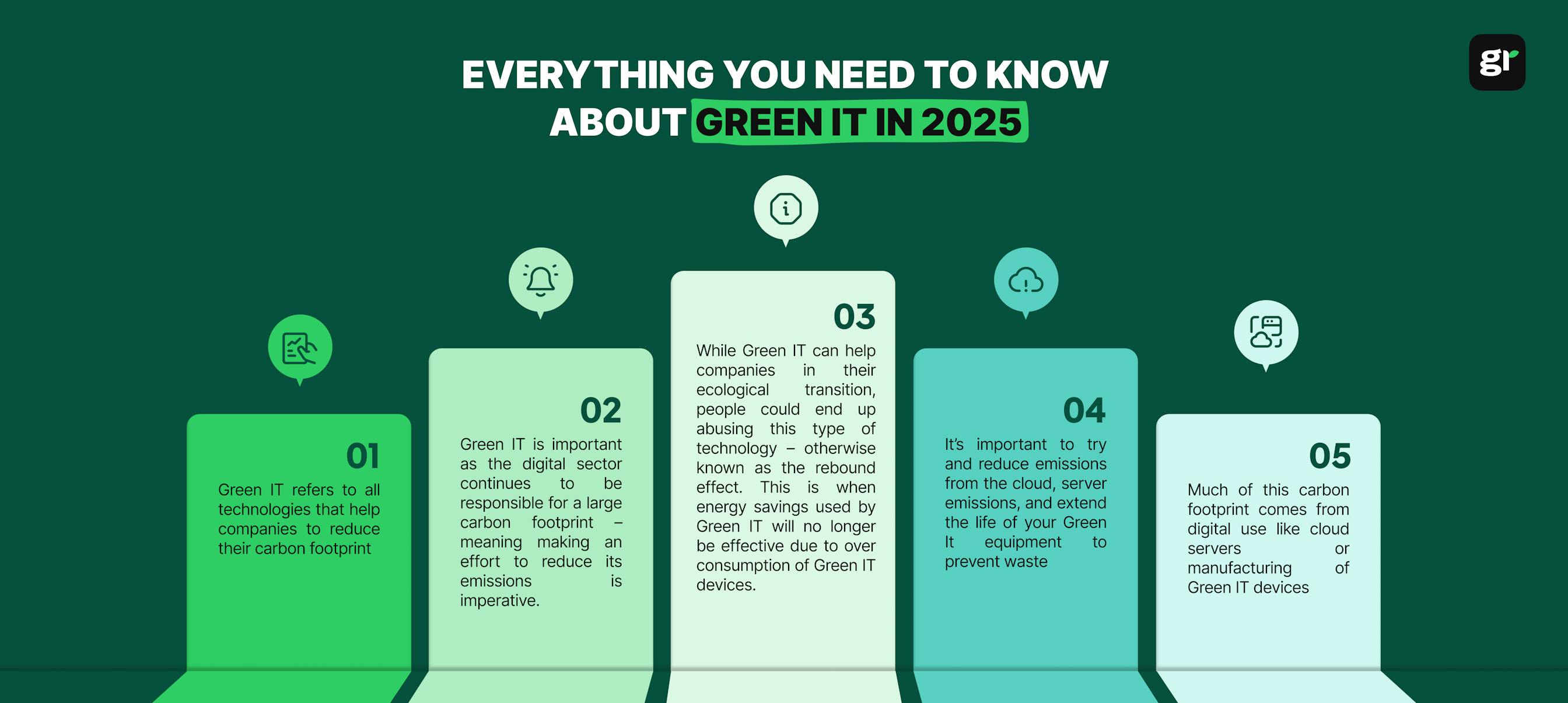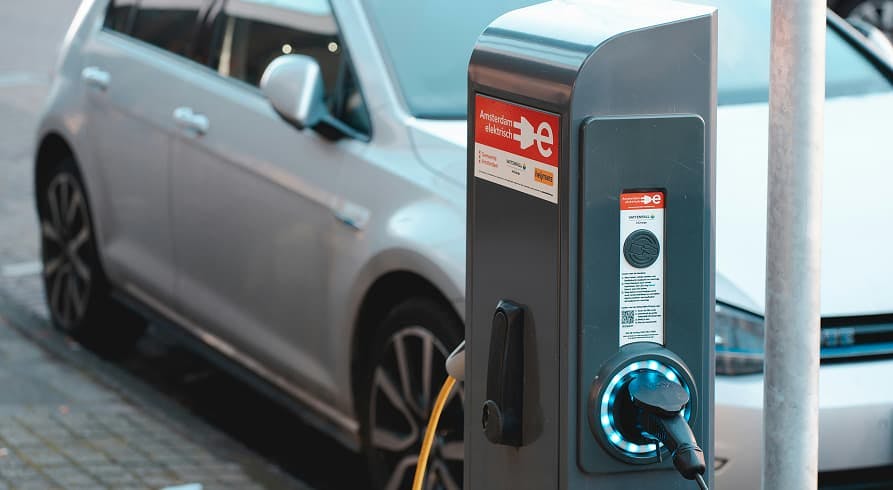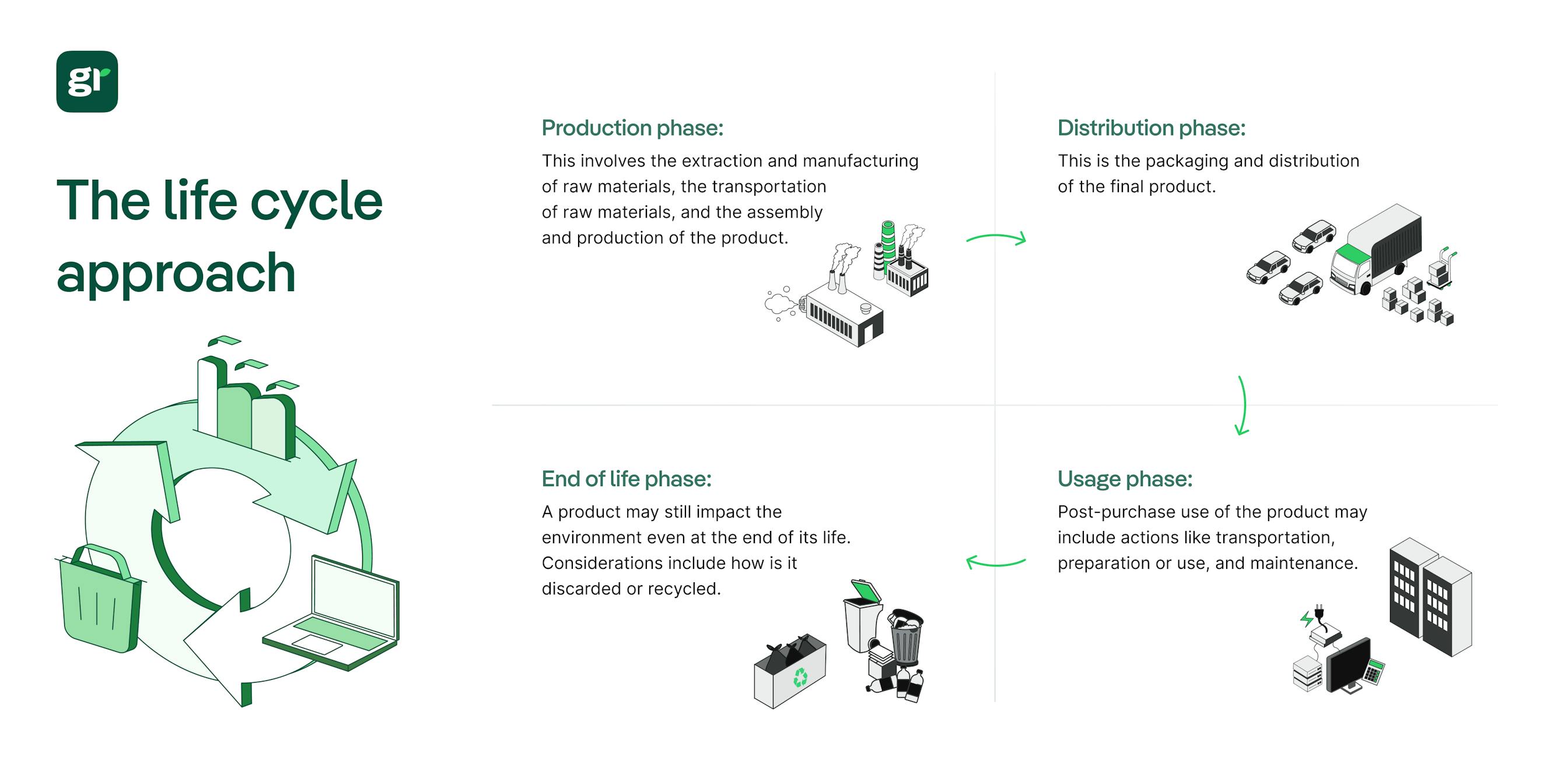ESG / CSR
Industries
Everything You Need to Know About Green Technology in 2025



In 2025, green technology may still feel like the new kid on the block – but the world of sustainable innovation has a long history you probably didn’t know about.
Take geothermal heating, a popular trend in energy-efficient homes and buildings. Using heat energy from below the earth’s surface dates back to Paleolithic times, when early humans bathed in hot springs and built homes from lava. Or take wind energy — as early as 5000 B.C., our ancestors were using wind energy to move boats down the River Nile.
By 2000 B.C., wind power was pumping water and grinding grains. As for solar power, humans were harnessing the sun’s energy in the 7th century B.C. to light fires from magnifying glass. Although battery-powered vehicles might seem like a new trend, 90% of New York City taxis at the turn of the 19th century were electric vehicles.
Humans have been working on sustainable solutions for everyday needs for a long time. But today, innovative solutions to our environmental problems is now more popular — and more necessary — than ever. Ultimately, green technologies aim to aid in the development of this more sustainable future.
In this article, we'll explain the impact of green technologies, how they may help to reduce greenhouse gas emissions or carbon emissions via the use of renewable energy such as solar and wind power, examples of green technology, and how addressing global environmental challenges can become easier with green technology.


What Does Green Technology Actually Mean?
In a nutshell, green technology is any technology designed to reduce the negative impact of human activity on the environment.
Green Technology: A Few Examples
There’s more to green tech than solar panels and wind turbines. Here’s a list of some popular planet-saving innovations you might not have heard of:
- Wastewater treatment and water purification (recycling water to make it drinkable, or clean enough for other purposes)
- Waste management and recycling (minimizing landfill and its impact)
- Waste-to-energy (burning landfill to generate electricity)
- Electric transport (electric cars, trucks, buses, scooters, etc.)
- Programmable thermostats (programming temperatures to save energy when you’re not home)
- Self-sufficient buildings (buildings that produce enough energy to power themselves, generally through solar panels)
- Low carbon construction (developing energy-efficient buildings made with green materials and smaller footprints)
- Carbon capture and storage (capturing and removing carbon from the atmosphere)
- LED lighting (ultra-energy-efficient light bulbs)
- Vertical farming (uses less land, less water, and can be set up in cities)
- Composting (turning food waste into fertilizer)
- Wave energy (using ocean waves to generate electricity)
- Batteries (energy storage is crucial in the transition to renewables)
- Green materials (local, renewable materials like bamboo, hemp and straw)
- Carbon tracking software (such as ourselves as Greenly — software that calculates your company’s carbon emissions)

What's the Difference Between Green Tech, Clean Tech, and Climate Tech?
Green technology or environmental technology means using science and technology to protect the world’s natural resources and mitigate the negative environmental impact of human activity.
Clean tech is a broad category that encompasses solutions that improve the performance and efficiency of production, while also reducing negative environmental impact of any kind.
Therefore, this includes clean technologies include innovations like clean energy, wastewater treatment, waste management, and more – all of which prove as sustainable alternatives for sustainable agriculture, the green tech industry, and other businesses adopting green technology.
Meanwhile, climate tech tackles problems specifically associated with human-induced climate change — basically, any technology focused on mitigating the impact of greenhouse gas emissions. For example, while water treatment and waste management are considered clean tech,they don’t qualify as climate tech.
The chart below will break down the differences between green tech, clean tech, and climate tech:
5 Green Tech Trends to Watch in 2025
Green technology encompasses a wide array of innovations designed to conserve natural resources while creating sustainable solutions for our planet's most alarming environmental challenges.
As we navigate 2025 and the continued negative repercussions of climate change, environmental investments are becoming more popular multiple sectors – such as with efforts to improve sustainable transportation or invest in carbon capture and storage systems.
From construction methods such as modular kitchens, which drastically reduce emissions, to revolutionary approaches in energy management – today's green tech landscape offers innovative opportunities which allow for both ecological preservation and economic growth.
The following five trends represent the most promising developments that are reshaping industries and offering practical pathways toward a more sustainable future.
Low-Carbon Construction
Smart, sustainable buildings are popping up everywhere, and for good reason – as they can help to reduce energy consumption, such as by mitigating the need for excessive heating and cooling with improved insulation. As a whole, traditional buildings and construction account for 37% of greenhouse gas emissions around the world.
Low-carbon buildings are designed to emit little to no carbon across their lifespan. They require minimal heating and cooling, produce very little waste and pollution, and are made from eco-friendly materials like bamboo and hemp. They generally produce their own energy, often through rooftop solar panels. With the demand for construction higher than ever, low-carbon buildings are crucial for a green future.
The content below will summarize key characteristics of low carbon buildings and how they help to avoid excessive emissions in comparison to traditional buildings:
🏢 Energy Efficiency
Low-carbon buildings use advanced insulation, LED lighting, and smart HVAC systems to drastically cut electricity use and reduce emissions.
🔋 Renewable Integration
Many are powered by on-site or local renewable energy sources like solar panels or geothermal systems, avoiding fossil fuel reliance.
🏗️ Sustainable Materials
These buildings favor low-emission construction materials like recycled steel, sustainably sourced wood, or low-carbon concrete alternatives.
📉 Operational Emissions
They emit significantly less CO₂ over time due to reduced heating, cooling, and lighting demands—unlike traditional buildings that consume more energy daily.
📊 Smart Building Tech
AI and sensor-based systems optimize energy use in real-time, helping prevent unnecessary waste and further lowering emissions.
🌍 Long-Term Impact
Widespread adoption of low-carbon buildings plays a major role in meeting climate targets and reducing urban carbon footprints.
Carbon Capture and Storage
Carbon offsets are a necessary step towards reversing global warming, but on their own, they can’t prevent the global temperature from surpassing 1.5°C. Therefore, we’ll need to physically remove existing carbon from the atmosphere to contribute to carbon neutrality or net-zero on a global scale.
Carbon capture and storage technology pulls carbon from the atmosphere and uses it to make synthetic fuel. As of right now, it’s expensive and relatively small-scale – but a study by Stanford University predicts that the costs of this technology could even be reduced by a multiple of six, making it much more scalable and accessible for businesses seeking environmental investments.
Renewable Energy Storage
In the midst of our transition to the use of renewables, one key problem is figuring out how to make clean energy available consistently – even when the sun has been hidden by clouds for days on end, or wind hasn’t spun turbines in weeks. In order to accomplish this, we’ll need to be able to store large amounts of energy for long periods of time, at little cost.
Innovative companies around the world, including Aquion Energy, Malta (Google X) and Highview Power, are developing unique long-term storage solutions for the power generated by renewable energy sources.
As a whole, fossil fuels are out, renewables are in, and the demand for storage technology will follow.

Hydrogen
You’re already familiar with battery-powered electric vehicles, but there’s another kind of electrical vehicle, and it’s known as a fuel cell electric vehicle. These cars don’t run on batteries — they run on hydrogen. This makes them far more efficient than combustion-powered vehicles, and they also don’t produce any harmful emissions.
According to McKinsey Sustainability, by 2050, hydrogen will eventually power over 400 million cars, up to 20 million buses, and more than 20% of passenger ships. Hydrogen fuel is still expensive, but hydrogen-powered vehicles are already being purchased in many parts of the world, and could become crucial for cutting transport emissions from fossil fuels.
Upcycling (Circular Waste Management)
Upcycling — turning waste into new, usable materials or products — has never been more popular. Innovative companies and organizations around the world are finding ways to upcycle existing waste into everything from fuel and fertilizer to clothes and bicycles.
Upcycling is part of the circular economy, a model where ‘waste’ doesn’t exist — it simply becomes the raw material for something new.
The flip cards below will provide some fun ideas to upcycle items you may already own or would typically throw away:
7 Ways to Become an Eco-Friendly Business
Even if you’re not a green tech company, there are plenty of ways your company can become an eco-friendly business.
Whether it be through implementing the use of wind turbines to power your data centers, seeking to reduce industrial waste, or designing more eco-friendly products – there are multiple ways to align your business with the ideals of the Environmental Protection Agency and reduce emissions long-term.
Here are 7 ways your organization could align itself with more environmental and sustainable business activities:
Track Your Carbon Footprint
The biggest problem our planet currently battles with is global warming due to the presence of greenhouse gasses (mainly carbon dioxide) in our atmosphere.
The private sector is one of the biggest carbon dioxide producers, which means the most effective and efficient way your company could become environmentally friendly is by tracking your carbon footprint.
Only once you’ve got a clear picture of your current impact, your organization can then develop a curated plan to effectively reduce your impact on environmental degradation and opt for more sustainable alternatives.
Conduct a Life Cycle Assessment (LCA)
No matter what kind of products or services you provide, you can conduct a life cycle assessment (LCA) on each of your products or services.


Reduce your carbon footprint
After you’ve put tracking in place and/or conducted a life cycle assessment, you can start to reduce your carbon footprint reduce your carbon footprint. This could include cutting down on business travel, switching to clean energy providers, installing LED light bulbs to improve your energy efficiency, and engaging with environmentally friendly suppliers.

Overview of Greenly's interface for carbon footprint
Offset Your Emissions
Contribute to carbon neutral or net zero by first reducing your carbon output as much as you can, and then purchasing offsets or removal credits to compensate for the impact of your essential emissions.
We have an article here on our favorite carbon offsetting projects.
Go Zero-Waste
Assess your company’s waste and commit to zero waste business principles. Recycle as much as possible, carefully consider new products and procedures, and purchase used and recycled items where you can.
The drop down sections below will provide some examples of improved zero-waste management:
🍽️ Composting Organic Waste
Instead of sending food scraps to landfill, companies and households can compost organic waste to create nutrient-rich soil, reduce methane emissions, and support local agriculture.
🔁 Reusable Packaging Programs
Brands can implement take-back systems or work with suppliers that offer reusable containers—helping cut single-use packaging waste significantly.
🏭 Industrial Symbiosis
Manufacturers can repurpose waste from one process as input for another. For example, excess heat, fabric scraps, or byproducts can be shared across facilities to eliminate landfill contributions.
📦 Minimalist & Recyclable Shipping
Companies that redesign product packaging to use fewer materials and make all components recyclable dramatically reduce landfill contributions and shipping emissions.
ESG Reporting
Although many companies around the world aren’t yet legally required to publish ESG reports, doing so can help you measure and reduce your environmental impact, set targets, stay accountable, and communicate your environmental commitment both internally and externally.
In addition to this, companies with better ESG scores have higher ROI, lower risk, and better resilience in crises. This was shown in a study conducted by Kroll discovered that ESG leaders had a more substantial return rate – with a 12.9% annual rate of returns in comparison to the 8.6% annual rate of their traditional counterparts.
Fund Environmental Projects
Another effective way to promote sustainability and environmentally friendly technologies is to consider donating to environmental initiatives, either locally or internationally. Many projects need help getting their feet off the ground and require continued support from donations.
Although we often talk about environmental impact in terms of reduction and mitigation, donating to worthy projects is a great way to go beyond simply minimizing your negative impact, by making a positive environmental impact. And if you don’t have the cash for it, consider giving employees paid time off to volunteer for an environment-related cause.
Here are some important environmental organizations you can donate to today.
How Can Your Company Benefit From Green Technology?
Even if you don’t plan on creating or utilizing any green technology of your own, your company can still benefit from the technological advancements being made in this field of work.
Here are some of the ways that your organization could benefit from green technology:
Join the Global Push for Sustainability
Green tech providers can help reduce your business’s carbon footprint, minimize waste, capitalize on renewable resources, and deliver products and services that are better for our world.
In the push towards a greener future, there’s room for everyone – whether you're a small business making your first sustainable switch, a corporation re-organizing its supply chain, or an individual trying to cut back on your personal carbon footprint.
Save Money
Green alternatives have acquired a reputation for being expensive, but in practice, they aren't as costly as you might think in the long-term. Most of the time, efficiency improvements in one area (i.e., electricity) lead to efficiency gains in other areas, such as in financial savings.
In addition to the tax credits often available for green tech investments, companies find that investments like solar power can significantly reduce their energy consumption, and ultimately energy costs – over the long-term. Furthermore, finding eco-conscious suppliers can also lead to savings – as those suppliers will also be looking to optimize their resource consumption for cost-effectiveness.
According to McKinsey Quarterly, making operational changes as an effort to going green can also cut costs, boost profits, help you enter new markets, and raise productivity.
Improve Productivity
Two things happen when your company commits to going green.
- Analyzing your operations reveals efficiency opportunities you might not have found otherwise.
- Employees become happier and more satisfied at work.
Ultimately, both of these lead to better productivity – as content employees will be more motivated to deliver quality work and ensure that business operations remain smooth and efficient.

Boost Employee Morale
When you commit to greener operations, you’ll be surprised how many of your existing staff (and potential hires) will jump on board.
A study from Deloitte show that value-driven companies do a much better job at retaining staff. Furthermore, a survey conducted by Reuters 83% of employees believe their companies aren’t doing enough to combat climate change.
Overall, employing greener initiatives into your business model could help to raise employees spirits and ultimately their motivation – all of which could benefit your organization long-term.
Build a Better Brand
Taking an ecological stance is one way to improve your brand’s image in the eyes of customers, suppliers, and investors.
A study from the Institute for Business Value discovered that 70% of shoppers believe brands should be sustainable and environmentally responsible, which provides ample motivation for brands willing to make the switch.
The table below will further depict the benefits of green technology:
| Benefit | Description |
|---|---|
| Reduced Environmental Impact | Green technology helps to minimize pollution and reduce the overall environmental footprint through cleaner production processes, renewable energy sources, and sustainable resource management. |
| Energy Efficiency | Improvements in energy efficiency reduce the amount of energy required to perform the same tasks, which leads to lower energy consumption and reduced greenhouse gas emissions. |
| Cost Savings | By implementing green technology, businesses and consumers can save money on energy bills and operational costs due to increased efficiency and the use of renewable resources. |
| Enhanced Public Health | Reducing pollution and environmental toxins through green technology contributes to better air and water quality, which in turn leads to improved public health outcomes. |
| Job Creation | The green technology sector creates new jobs in industries such as renewable energy, energy efficiency, and environmental management, fostering economic growth and development. |
| Resource Conservation | Green technology promotes the efficient use of natural resources, reducing waste and conserving materials for future generations. |
| Climate Change Mitigation | By reducing greenhouse gas emissions and promoting sustainable practices, green technology plays a crucial role in mitigating the effects of climate change. |
| Improved Corporate Image | Companies that adopt green technologies can enhance their reputation and appeal to environmentally conscious consumers, investors, and partners. |
| Regulatory Compliance | Adopting green technology helps businesses comply with environmental regulations and standards, avoiding fines and legal issues. |
Ultimately, green technology can benefit all companies of all sizes and various industries – as these technological advances can help us to develop the eco-friendly future we need to ensure our global economy and planet can not only survive, but thrive.
What About Greenly?
Not all green businesses need to be technology-based. With the right business model, you can make most products and services environmentally friendly. Take the first step towards reducing your carbon footprint by requesting a free and non-binding demo with one of our experts today and finding the solution that best fits your business needs.
We’ve helped hundreds of businesses reduce their environmental impact, and we can do the same for you, whether you're a green technology business, or not.
Click here to learn more about Greenly and how we can help you reduce your carbon footprint.





